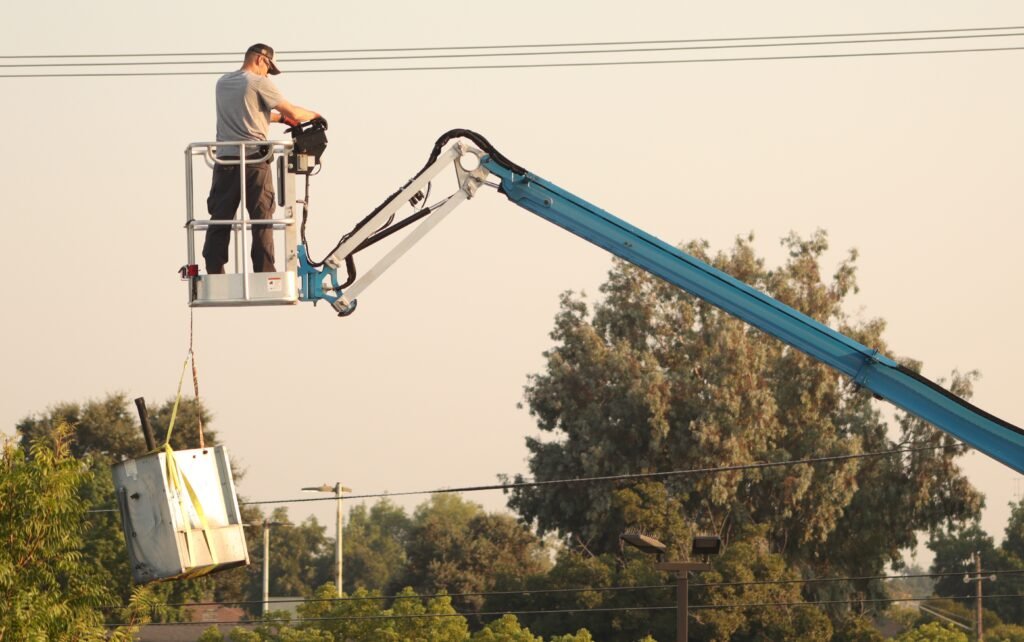Imagine being able to monitor your home or office from anywhere, without the hassle of tangled wires and complicated installations. Wireless video monitors offer this convenience, allowing you to keep an eye on things remotely and ensuring your peace of mind. However, like anything in life, they are not without their drawbacks. In this article, we will explore the disadvantages of wireless video monitors, shedding light on the potential limitations and considerations you should be aware of before investing in this technology. So, grab a cup of coffee, sit back, and let’s explore the less glamorous side of wireless video monitoring.
Interference
Signal Interference
One of the major disadvantages of wireless video monitors is signal interference. This occurs when the wireless signal from the camera is disrupted or blocked by other electronic devices or physical obstacles in the environment. Common sources of signal interference include household appliances, other wireless devices, walls, and even weather conditions. This can result in a loss or degradation of the video feed, causing gaps or pixelated images. Signal interference can be frustrating, especially when important events are missed or the monitoring process is repeatedly interrupted.
Physical Interference
In addition to signal interference, wireless video monitors are also susceptible to physical interference. This refers to situations where the physical layout of the environment impacts the quality of the video transmission. Physical interference can occur when the video camera is placed too far away from the monitor, leading to a weak signal or a complete loss of connection. Moreover, obstacles such as walls, furniture, or large objects can hinder the wireless signal, resulting in a poor video feed. To ensure optimal performance, it is important to carefully consider the physical layout and potential obstacles in the monitoring area.
Limited Range
Distance Limitations
Another drawback of wireless video monitors is their limited range. Depending on the specific model and technology used, wireless video monitors may only have a range of a few hundred feet. This means that if you need to monitor an area that is far away from the base station or monitor, the signal may not reach your device, resulting in a complete loss of video feed. The limited range can be a significant limitation, especially in scenarios where monitoring a large property or an outdoor area is necessary. It is important to consider the distance limitations of wireless video monitors before deploying them in your desired monitoring location.
Obstacles
In addition to distance limitations, wireless video monitors can also face challenges when there are physical obstacles in the monitoring area. Walls, floors, doors, and other objects can attenuate or block the wireless signal, leading to a weakened or non-existent video feed. The signal quality can be further compromised if there are multiple obstacles between the camera and the monitor. Obstacles not only limit the range of the wireless video monitor but also introduce the risk of signal interference, as mentioned earlier. To ensure reliable monitoring, it is important to evaluate the physical environment and minimize obstacles as much as possible.

This image is property of images.pexels.com.
Security Risks
Unauthorized Access
Wireless video monitors can pose security risks due to the potential for unauthorized access. Since the video feed is transmitted wirelessly, there is a possibility that someone with malicious intent could intercept the signal and gain access to the video footage. This could compromise the privacy and security of the monitored space, and potentially lead to activities such as theft or surveillance. To mitigate this risk, it is crucial to choose wireless video monitors that utilize strong encryption protocols and implement robust security measures. Regularly updating the firmware and passwords can also help safeguard against unauthorized access.
Signal Interception
Closely related to unauthorized access is the risk of signal interception. Wireless video monitors transmit their signals over the airwaves, making them susceptible to interception by individuals equipped with the appropriate tools and knowledge. Intercepted signals can potentially be analyzed or manipulated, giving unauthorized users access to sensitive video footage. Signal interception not only compromises the security of the monitored space but also undermines the integrity of the monitoring system. Implementing encryption and authentication mechanisms can help protect against signal interception and maintain the confidentiality of the video feed.
Latency
Delay in Transmission
Latency refers to the delay in the transmission of video data between the camera and the monitor. In wireless video monitoring systems, latency can result from various factors such as signal processing, network congestion, or transfer protocols. When latency is present, there can be a noticeable delay between the actual events occurring in the monitored area and the corresponding video feed displayed on the monitor. This delay can be problematic in situations where real-time monitoring or immediate action is required. It is important to select wireless video monitors that have low latency to ensure timely and accurate monitoring.
Inconsistent Streaming
Apart from delay, wireless video monitors can also exhibit inconsistent streaming. This means that the video stream may suffer from occasional hiccups or interruptions, resulting in an inconsistent viewing experience. Inconsistent streaming can manifest as stuttering or buffering, where the video freezes or jumps, making it difficult to effectively monitor the situation. Factors such as network congestion or limitations in the wireless technology can contribute to inconsistent streaming. To minimize this issue, it is crucial to choose wireless video monitors that support stable and reliable streaming protocols, and have sufficient bandwidth to handle the video data.

This image is property of images.pexels.com.
Power Consumption
Battery Life
Wireless video monitors are typically powered by batteries, which can pose challenges in terms of battery life. Depending on the specific model and usage patterns, wireless video monitors may require frequent battery replacements or recharging. This can be inconvenient, especially in situations where continuous monitoring is required or when the monitoring area is located far away from a power source. It is important to carefully consider the battery life of wireless video monitors and choose models that offer longer battery life or the ability to connect to an external power source for prolonged monitoring periods.
Continuous Functioning
Related to battery life, wireless video monitors may face limitations in terms of continuous functioning. While some models may have extended battery life, they may still require periodic breaks for recharging, which can result in gaps in monitoring coverage. Additionally, if the battery is not properly managed or charged, there is a risk of the video monitor shutting down unexpectedly, leaving the monitoring area unattended. To ensure continuous functioning, it is essential to monitor the battery levels regularly and have backup batteries or alternative power sources available, if needed.
Dependency on Internet Connection
Network Reliability
Wireless video monitors heavily rely on a stable and reliable internet connection for the transmission of video data. However, the dependence on the internet introduces a vulnerability in terms of network reliability. If the internet connection experiences disruptions or outages, the video feed may be interrupted or completely lost. This can be problematic, especially in critical monitoring situations where uninterrupted coverage is essential. It is important to choose a reliable internet service provider and monitor the network connection to ensure optimal performance of the wireless video monitoring system.
Slow or Unstable Connection
In addition to network outages, slow or unstable internet connections can also impact the performance of wireless video monitors. A slow or unstable connection can lead to buffering issues, pixelated video, or even complete loss of the video feed. This can be frustrating and may hinder effective monitoring. Factors such as distance from the Wi-Fi router, interference from other devices, or limitations in the internet service can contribute to a slow or unstable connection. It is essential to evaluate the internet connection speed and stability before implementing wireless video monitors, and consider using Wi-Fi range extenders or other techniques to enhance signal strength.

This image is property of images.pexels.com.
Limited Flexibility
Installation Constraints
Wireless video monitors may face installation constraints that limit their flexibility. Depending on the specific model and requirements, installing wireless video monitors may involve mounting brackets, wiring, or other components. These installation requirements can make it difficult to position the monitors in desired locations, especially in situations where the aesthetics of the environment need to be preserved or when there are limitations in the available mounting options. To overcome installation constraints, it is important to plan the positioning of the wireless video monitors carefully and explore alternative installation methods if necessary.
System Compatibility
Another limitation of wireless video monitors is system compatibility. Different models and brands may utilize different wireless technologies or protocols, which may not be compatible with each other. This can create challenges when attempting to add or expand the wireless video monitoring system with additional cameras or monitors from different manufacturers. It is essential to ensure that all components of the wireless video monitoring system are compatible with each other, or to select a system that offers flexibility and compatibility with a variety of devices.
Quality and Resolution
Compression Artifacts
Wireless video monitors, especially those that rely on streaming protocols, can suffer from compression artifacts. Compression is a technique used to reduce the size of video files for efficient transmission and storage. However, aggressive compression can result in artifacts such as pixelation, blurring, or loss of details in the video footage. These compression artifacts can significantly impact the quality and clarity of the video feed, making it difficult to accurately monitor the environment. To mitigate this issue, it is important to choose wireless video monitors that utilize high-quality compression algorithms and offer options to adjust the compression settings for optimal video quality.
Image and Video Quality
The overall image and video quality of wireless video monitors can vary depending on the specific model and technology used. Factors such as resolution, frame rate, dynamic range, and color accuracy can influence the visual fidelity of the video feed. Lower-quality or budget wireless video monitors may exhibit reduced image and video quality, which can result in blurry or grainy footage. This can impact the effectiveness of monitoring activities, especially in situations where clear details are crucial. When selecting wireless video monitors, it is important to prioritize models that provide high-quality image and video output to ensure accurate and reliable monitoring.
Expensive Equipment and Infrastructure
Initial Investment
Wireless video monitors can come with a significant initial investment. Depending on the desired features, capabilities, and the number of cameras and monitors needed, the cost of the wireless video monitoring system can quickly add up. Higher-end models that offer advanced features such as high-definition video, pan-tilt-zoom functionality, or night vision capabilities can be particularly expensive. It is important to carefully consider the budget and needs when planning to implement a wireless video monitoring system, and conduct thorough research to find a balance between affordability and desired features.
Maintenance Costs
In addition to the initial investment, wireless video monitors can also incur ongoing maintenance costs. Depending on the specific model and usage, maintenance costs can include expenses such as replacement batteries, firmware updates, or repairs. Regular maintenance is essential to ensure the reliability and longevity of the wireless video monitoring system, but it can add to the overall cost of ownership. It is important to factor in ongoing maintenance costs when budgeting for a wireless video monitoring system and to ensure that the necessary resources are allocated for proper upkeep.
Privacy Concerns
Intrusion and Monitoring
Wireless video monitors can raise privacy concerns, particularly when they are used in public or shared spaces. The presence of cameras that continuously monitor individuals or activities may be perceived as intrusive or invasive, causing discomfort or mistrust. Careful consideration should be given to the placement of wireless video monitors to respect privacy rights and comply with legal and ethical regulations. Additionally, clear communication and signage should be provided to inform individuals about the presence and purpose of the surveillance system, ensuring transparency and maintaining trust.
Data Security
The transmission and storage of video footage in wireless video monitors can introduce data security risks. If the video data is not adequately protected or encrypted, it can be vulnerable to unauthorized access or data breaches. This can compromise the privacy of the individuals being monitored and potentially lead to the misuse or exploitation of the video footage. To safeguard against data security risks, it is crucial to select wireless video monitors that incorporate robust encryption methods, implement strict access controls, and regularly update the firmware to address any identified security vulnerabilities.
In conclusion, wireless video monitors offer convenience and flexibility in monitoring various environments, but they come with their own set of disadvantages. Signal interference and physical obstacles can hinder the quality and reliability of the video feed. Limited range and distance limitations may restrict the coverage area of the video monitors. Security risks, such as unauthorized access and signal interception, can compromise privacy and data integrity. Latency and inconsistent streaming can cause delays and interruptions in monitoring. Power consumption and dependency on internet connection introduce limitations in terms of battery life, continuous functioning, and network reliability. Limited flexibility in installation and system compatibility can impose constraints. Quality and resolution may be compromised due to compression artifacts or lower image and video quality. Expensive equipment and maintenance costs need to be considered, along with privacy concerns related to intrusion, monitoring, and data security. It is important to carefully assess these disadvantages and choose wireless video monitors that best fit the specific monitoring needs and requirements.

Meet Penny Sterling, the editor behind the captivating content of our blog, “Wireless Video Monitor.” With a background in electrical engineering and a deep passion for technology, Penny has become a leading authority in the world of wireless video monitors. Her ability to distill complex concepts into accessible articles has made her a trusted guide for both tech enthusiasts and newcomers to the field. Penny’s unwavering commitment to research and staying up-to-date ensures that “Wireless Video Monitor” remains an authoritative source for reliable information. Get ready to embark on a journey of wireless video monitor exploration with Penny Sterling as your knowledgeable and dedicated mentor.
